
Concept explainers
(a)
Interpretation:
The hybrid orbitals on the central atom that form bond in
Concept Introduction:
Hybridization is the idea that atomic orbitals combine to form new hybridized orbitals which in turn, influences molecular geometry and bonding properties. Hybridization is also an expansion of the
(a)
Answer to Problem 10.57QE
The hybrid orbitals on the central atom that form bond in
Explanation of Solution
The structure of

The
The process of mixing and rearrangement of one s and three p orbitals of valence shell of same atom to form new four hybrid orbitals having maximum symmetry and definite orientation is known as
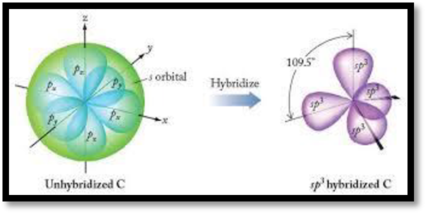
Figure 1
(b)
Interpretation:
The hybrid orbitals on the central atom that form bond in
Concept Introduction:
Refer to part (a).
(b)
Answer to Problem 10.57QE
The hybrid orbitals on the central atom that form bond in
Explanation of Solution
The structure of
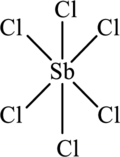
The
The
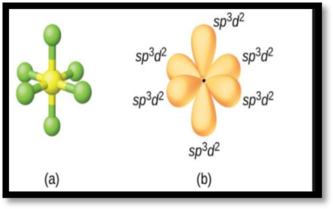
Figure 2
(c)
Interpretation:
The hybrid orbitals on the central atom that form bond in
Concept Introduction:
Refer to part (a).
(c)
Answer to Problem 10.57QE
The hybrid orbitals on the central atom that form bond in
Explanation of Solution
The structure of
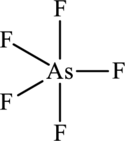

Figure 3
(d)
Interpretation:
The hybrid orbitals on the central atom that form bond in
Concept Introduction:
Refer to part (a).
(d)
Answer to Problem 10.57QE
The hybrid orbitals on the central atom that form bond in
Explanation of Solution
The structure of
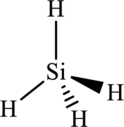
The
The process of mixing and rearrangement of one s and three p orbitals of valence shell of same atom to form new four hybrid orbitals having maximum symmetry and definite orientation is known as
(e)
Interpretation:
The hybrid orbitals on the central atom that form bond in
Concept Introduction:
Refer to part (a).
(e)
Answer to Problem 10.57QE
The hybrid orbitals on the central atom that form bond in
Explanation of Solution
The structure of
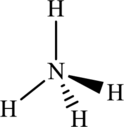
The
The process of mixing and rearrangement of one s and three p orbitals of valence shell of same atom to form new four hybrid orbitals having maximum symmetry and definite orientation is known as
Want to see more full solutions like this?
Chapter 10 Solutions
Chemistry Principles And Practice
- For Raman spectroscopy/imaging, which statement is not true regarding its disadvantages? a) Limited spatial resolution. b) Short integration time. c) A one-dimensional technique. d) Weak signal, only 1 in 108 incident photons is Raman scattered. e) Fluorescence interference.arrow_forwardUsing a cell of known pathlength b = 1.25115 x 10-3 cm, a water absorption spectrum was measured. The band at 1645 cm-1, assigned to the O-H bending, showed an absorbance, A, of 1.40. a) Assuming that water density is 1.00 g/mL, calculate the water molar concentration c (hint: M= mole/L) b) Calculate the molar absorptivity, a, of the 1645 cm-1 band c) The transmitted light, I, can be written as I= Ioexp(-xb), where x is the absorption coefficient (sometimes designated as alpha), Io is the input light, and b is the cell pathlength. Prove that x= (ln10)*x*c. (Please provide a full derivation of the equation for x from the equation for I). d) Calculate x for the 1645 cm-1 bandarrow_forwardI need help with the follloaingarrow_forward
- For a CARS experiment on a Raman band 918 cm-1, if omega1= 1280 nm, calculate the omega2 in wavelength (nm) and the CARS output in wavelength (nm).arrow_forwardI need help with the following questionarrow_forwardFor CARS, which statement is not true regarding its advantages? a) Contrast signal based on vibrational characteristics, no need for fluorescent tagging. b) Stronger signals than spontaneous Raman. c) Suffers from fluorescence interference, because CARS signal is at high frequency. d) Faster, more efficient imaging for real-time analysis. e) Higher resolution than spontaneous Raman microscopy.arrow_forward
- Draw the major product of the Claisen condensation reaction between two molecules of this ester. Ignore inorganic byproducts. Incorrect, 5 attempts remaining 1. NaOCH3/CH3OH 2. Acidic workup Select to Draw O Incorrect, 5 attempts remaining The total number of carbons in the parent chain is incorrect. Review the reaction conditions including starting materials and/or intermediate structures and recount the number of carbon atoms in the parent chain of your structure. OKarrow_forwardUsing a cell of known pathlength b = 1.25115 x 10-3 cm, a water absorption spectrum was measured. The band at 1645 cm-1, assigned to the O-H bending, showed an absorbance, A, of 1.40. a) Assuming that water density is 1.00 g/mL, calculate the water molar concentration c (hint: M= mole/L) b) Calculate the molar absorptivity, a, of the 1645 cm-1 band c) The transmitted light, I, can be written as I= Ioexp(-xb), where x is the absorption coefficient (sometimes designated as alpha), Io is the input light, and b is the cell pathlength. Prove that x= (ln10)*x*c d) Calculate x for the 1645 cm-1 bandarrow_forwardConvert 1.38 eV into wavelength (nm) and wavenumber (cm-1) (c = 2.998 x 108 m/s; h = 6.626 x 10-34 J*s).arrow_forward
 Chemistry: Principles and PracticeChemistryISBN:9780534420123Author:Daniel L. Reger, Scott R. Goode, David W. Ball, Edward MercerPublisher:Cengage Learning
Chemistry: Principles and PracticeChemistryISBN:9780534420123Author:Daniel L. Reger, Scott R. Goode, David W. Ball, Edward MercerPublisher:Cengage Learning
